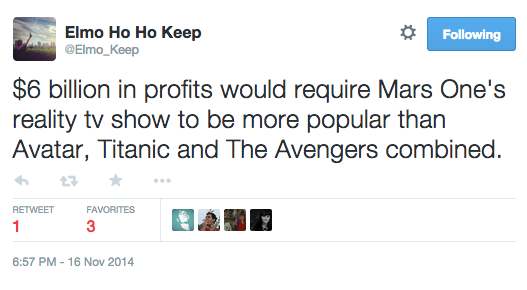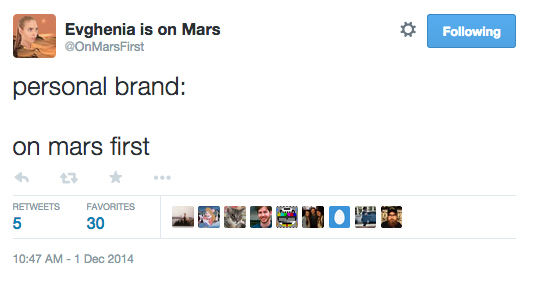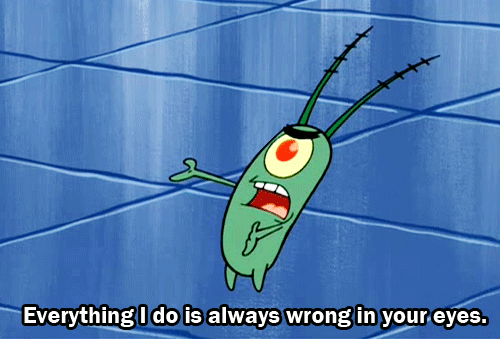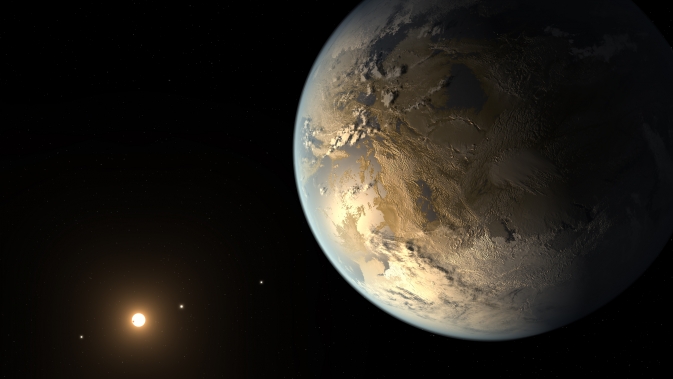Six Things That Happened This Year In Space
To the moon, Alice!

In 2014, a year when the world more or less went to the dogs, many eyes turned spaceward. It’s understandable. Space has potential, a place where humanity might be able to cut its losses and start everything again.
Yes, 2014 felt like the year when humans started to psychologically prepare to leave Earth.
–
#1: Mission To Mars
45 years after the first person walked on the moon, NASA finally has some real news about getting humans on Mars. It all rests on the success of a new space capsule called Orion, which, after a few minor delays, was launched on December 5 almost six kilometres into space, before returning home 4.5 hours later, re-entering Earth’s atmosphere at 32,000 kph.
This was just a test flight, but the results seem good so far. This means that plans will go ahead for Orion’s next unmanned mission to orbit the moon (2017), then to take humans to a near-Earth asteroid (2021), and eventually to Mars (2030ish).
Less cautiously, Elon Musk, CEO of SpaceX — the first privately owned company to sell rockets to NASA — says that he also wants to send people to Mars: one million of them, 100 at a time, beginning in around 2040. In an interview with Aeon magazine earlier this year, Musk said getting people on Mars is a humanitarian necessity, “in order to safeguard the existence of humanity in the event that something catastrophic were to happen.”
Mars One, started by Dutch entrepreneur Bas Lansdorp, is also hoping to start the first human colony on Mars. Mars One wants to send crews of four humans on a one-way journey to Mars every two years, beginning in 2024. The plan is to raise funds for the Martian colony by documenting the journey via a reality TV show. Like Big Brother. On Mars.
 Although questions have been raised about Mars One’s viability, they didn’t stop 200,000 people — allegedly — applying for the opportunity.
Although questions have been raised about Mars One’s viability, they didn’t stop 200,000 people — allegedly — applying for the opportunity.
But while Elon Musk and Bas Lansdorp scramble to send their lab rats – I mean astronauts – to Mars, they both seem to have overlooked the fact that a young woman is already living there, alone, and thriving. In August this year, Evghenia launched herself in a home-made rocket ship out of the Earth’s atmosphere, towards Mars. Now she’s living off water and protein bars, reminding us daily that she is “on it first”.

–
#2: Robots in Space
With the exception of Evghenia, 2014 has mostly been about robots in space, not humans. Mars Opportunity and Curiosity Rovers are still walking the red deserts of Mars looking for things.
But this year, they were overshadowed by Philae, a young maverick upstart of a robot who managed to land on a comet hurtling through space 28 light minutes away (that’s 317 million miles).

Image taken by Philae, 3km from landing on comet 67P/Churyumov–Gerasimenko. Credit: ESA/Rosetta/Philae/DLR/NASA
Philae lived for three days in tough conditions on the comet and, prior to falling silent, was able to transmit all the data it collected back to scientists on Earth.
Although it’s still early days, Philae’s findings include insights about the composition of water ice in space, and the fact that comets sing unusual tunes.
–
#3: Plankton in Space?
In August this year, Russian cosmonauts said they discovered sea plankton stuck to the outside of the International Space Station, alive and thriving. If true, this means that plankton have been living in the zero gravity, sub-zero, vacuum-sealed, radiation-drenched climate of space for a while.
The strangest thing about the plankton, according to scientists, is that they were not native to the blast-off site in Kazakhstan, meaning they must have been sucked up in air currents through the Earth’s atmosphere, and onto the spacecraft at an altitude of 420km above sea level.
The discovery of the plankton has since been questioned by NASA, who claim that there is no evidence that the plankton were alive.

–
#4: Pizza in Space
This year, a 3-D printer fabricated a part of itself on the International Space Station.
The printed object, a side casing for the printer, suggests that if future astronauts need replacement parts for their gear, they won’t necessarily need to come back to Earth; they can just print them up there.

International Space Station Commander Barry “Butch” Wilmore holds up the first object 3-D printed in space. Credit: NASA
It’s a history-making moment for space exploration. Astronauts travelling to Mars, for instance, might be able to receive, via email, data for a spare part, and then print it on demand, millions of kilometres away. There is even talk of space explorers printing pizza to eat on the vast, lonely deserts of Mars.
–
#5: A New Earth
In April, NASA’s Kepler space telescope discovered an Earth-size alien planet in the habitable zone of its host star, meaning that it might have liquid water and the right conditions for life.
The new planet, which has the catchy name of Kepler-186f, orbits a smaller sun than ours, but close enough to it to be inside “the Goldilocks zone”, where life can be supported. The only problem is: Kepler-186f is 490 light years away, which means a lot of 3-D printed pizza before humans get there.
–
#6: Space Is A Hologram (And So Are You)
In the experimental realms of quantum physics there have long been whispers of a theory that the universe is a 2-D hologram that creates the impression of three dimensions. This year, some physicists invented something called the Holometer, which takes some steps to practically investigating this theory further.
I’m not going to pretend I know how the Holometer works, except to say that next time you look at the night’s stars, know that space might actually be two dimensional, and that your life is an illusion, and that 2014 didn’t really happen, and nor will 2015.
Happy New Year.

–
Oscar Schwartz is a writer from Melbourne, Australia. He writes about how technology is changing what it means to be a human. He blogs about it here, and tweets regularly @scarschwartz
Feature image by Bryan Versteeg, for Mars One.
